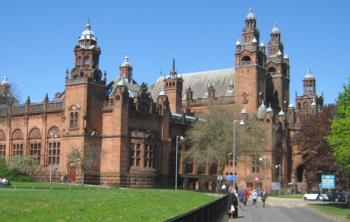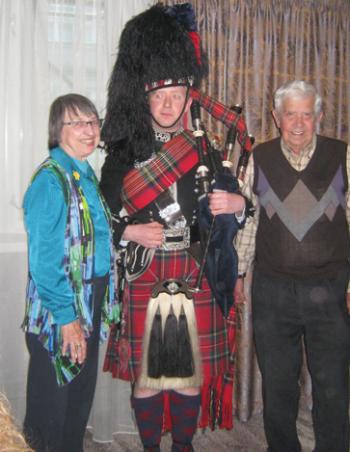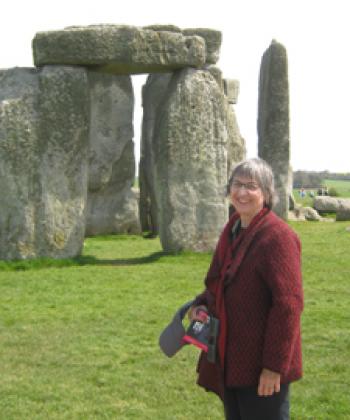England, Scotland and Wales with Grand Circle
This item appears on page 24 of the January 2017 issue.
London is about 415 miles from Edinburgh, but in getting from one to the other, my wife, Anne, and I ended up traveling about 1,400 miles on a bus tour of England, Scotland and Wales with Grand Circle Travel (Boston, MA; 800/221-2610, www.gct.com).
Our 16-night tour took place April 28-May 15, 2016, and the cost was $3,490 per person, not including airfare.
As had been our experience before with Grand Circle, it was a great adventure. Our delightful program director, Elaine Sloane, was a font of knowledge who provided many surprises along the way.
What I would note about the hotels typically used by Grand Circle is location, location, location. In large cities, they always manage to arrange for hotels that provide easy access to transportation and visitor sites. One example was our hotel in London, the Tower Hotel (St. Katharine’s Way; www.guoman.com). We had a view of the Tower Bridge along with quick access to buses and the Tube.
In London, we were treated to a city tour and saw the usual tourist sights, including Big Ben and the Houses of Parliament. In our free time, Anne and I took the 30-minute ride on the London Eye for €25 (near $27) each. At 135 meters (443 feet), it’s the world’s tallest cantilevered observation wheel.
After seeing some of the 38 colleges and other buildings in Oxford, our group continued to the Cotswolds. The green rolling hills and charming country cottages have led to its designation as an Area of Outstanding Natural Beauty (www.landscapesforlife.org.uk), and it has been set aside for conservation.
Ample time was provided at Bath and Stonehenge, particularly the latter, which was surrounded by verdant fields of grass and rapeseed. Stonehenge has a bus system that provides easy access to the stone monuments for those who choose not to walk the 1½ miles from the visitors’ center.
In northern Wales, Snowdonia National Park surrounds the region’s highest peak, Mount Snowdon (3,560 feet), and is a favorite site for hikers.
A part of each Grand Circle tour is a home-hosted dinner, and ours took place in Caernarfon, a small town on the coast, across from the Isle of Anglesey. Our group of 32 was split into four groups of eight, and each group was sent to a different house for dinner and conversation. We learned about the locals’ customs while sharing some of ours.
Our visit was with psychology professor Mike Beverly and his wife, Angela, who were quite interesting and entertaining and provided us with a meal of shepherd’s pie.
The following day included a steam train ride on the Ffestiniog Railway, the oldest-surviving railway company in the world, with almost 200 years of history. Riders were taken on a 13½-mile journey from the harbor in Porthmadog to the slate-quarry town of Blaenau Ffestiniog.
We then visited Portmeirion, an Italianate tourist village built in northern Wales between 1925 and 1975. Its design was inspired by the fishing village of Portofino on the Italian Riviera. A visit to it is a taste of Disney’s Epcot in Wales. Because of the many artifacts in the buildings and throughout the grounds, it also reminded me of Hearst Castle in central California.
York, England, is noted for its magnificent Gothic cathedral, York Minster. Its Great East Window is the largest expanse of medieval stained glass in the world. As a stained-glass hobbyist, I particularly appreciated this visit.
Another site worth visiting in York is the National Railway Museum (www.nrm.org.uk), with a collection of more than 100 locomotives and nearly 300 other items of rolling stock.
The central part of the city is enclosed by medieval walls, and Anne and I found walking these to be a worthwhile experience, with views from overhead of many beautiful gardens and green lawns.
Looking for a free concert? On most days, York Minster has evensong around 5 p.m. with a splendid chorus. This is one time you can visit the church without paying a fee, although donations are accepted.
After York, we traveled to the Lake District, England’s largest national park, which has been the inspiration for writers from Keats to Beatrix Potter. We visited the High Yewdale Farm, a family estate.
Along the route, we stopped at a portion of Hadrian’s Wall, a defensive fortification built by the Romans. A significant portion of this stone wall still stands and can be followed on foot.
We also were taken to the Lockerbie Garden of Remembrance, a site dedicated to the 259 folks aboard Pan Am Flight 103 that went down in 1988. Eleven people on the ground were also killed. The memorial, part of Dryfesdale Cemetery, is a beautiful and tranquil place.
The final stop on the itinerary was Edinburgh, where we had a city tour and plenty of time at the castle.
Since we had a free day on the tour, I decided to visit Glasgow. From our hotel in Edinburgh, it was only a 5-minute walk to the train station, from which a trip to Glasgow took 45 minutes and cost €12 (near $18), round trip.
I’m probably in the minority, but I was more impressed with Glasgow than I was with Edinburgh. Anne and I had visited the city in 2004, and I remembered it as a dirty, industrial place. Not so anymore! Glasgow is now much cleaner and vibrant. I rode a hop-on, hop-off bus (€13) and found it quite informative and helpful.
I was particularly impressed with the Kelvingrove Art Gallery & Museum. Its forest of spires, turrets and towers convinced me to get off the bus at that stop. Free to enter, many of its floors have classic paintings and exhibits.
The final event on our Grand Circle tour was the farewell dinner, where a pipe major in full costume explained the elements of his outfit, then played several songs for us on his bagpipe.
JACK DINI
Livermore, CA



